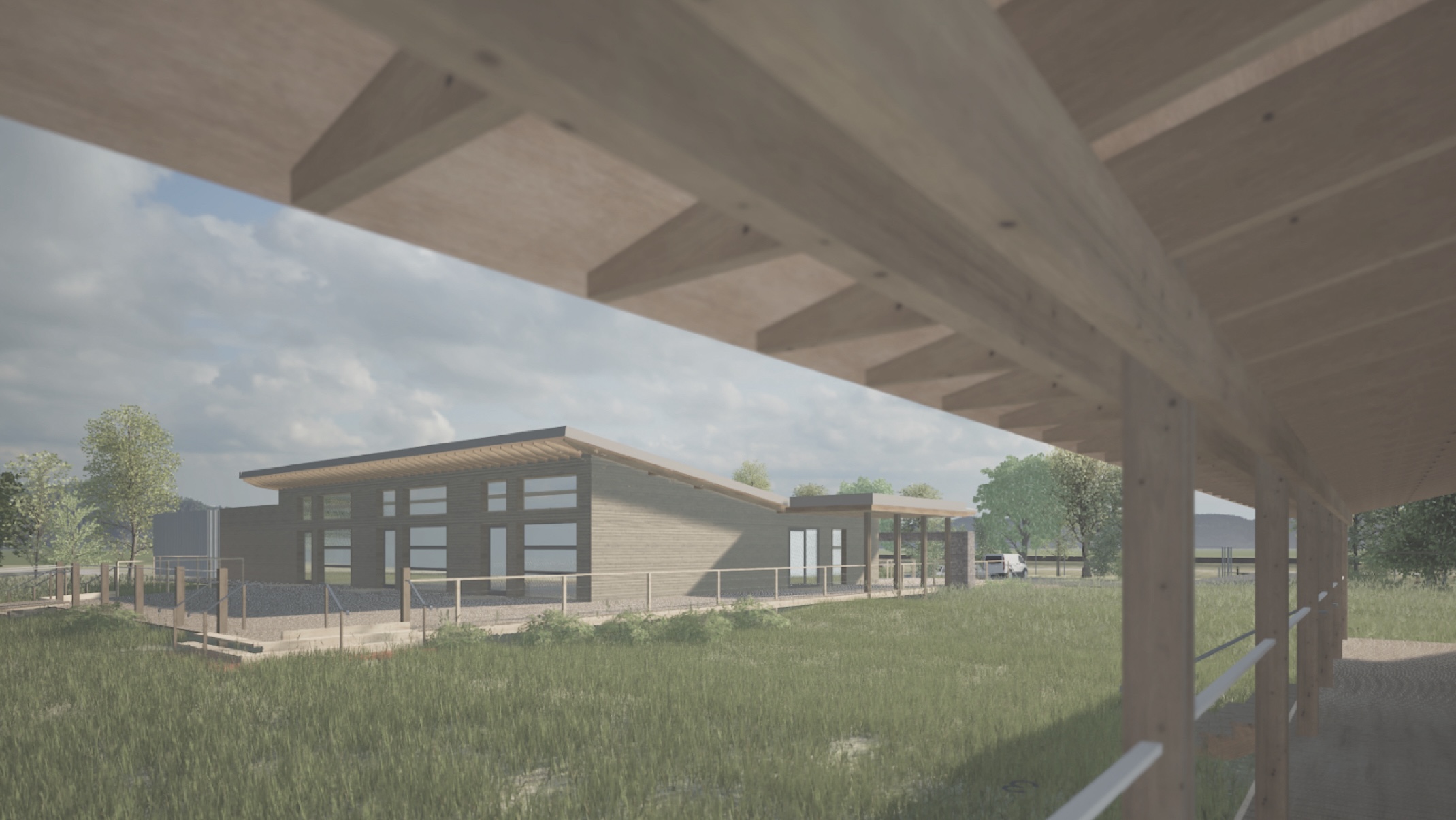
Maber faced a challenge designing a training facility for the East Midlands Reserve Forces and Cadets Association.
Designed by Maber, the Beckingham Cadet Training Camp near Lincoln will provide the East Midlands Reserve Forces and Cadets Association with a sustainable new training facility. Helping to provide opportunities for children and young people to develop valuable life skills, the dedicated space will be available to cadets from around the country while supporting local recruitment.
Serving 150 cadets and 25 adults, the facility includes four single-storey blocks. Three will be used as dormitories and the fourth will be an amenity block to provide flexible teaching and dining spaces, as well as a kitchen, an office and a store and armouries space.
Design for a unique landscape
The landscape and location created some unique challenges for the design. First, the training camp sits on former agricultural land dominated by a ridge and furrow landscape pattern due to medieval ploughing. Second, the adjacent land was used for training during the Second World War and contained some unexploded ordnance.
These considerations informed both the design and the materials for the project, as Ruzha Sirmanova, architect at Maber, explains: “Following a detailed feasibility study, we realised there was only one location for the project, due to the ridges and furrows. This meant we had to create a granular design that could be broken down and easily positioned.”

“From the early stages, the client was impressed with the visuals and the ability to see the 3D blocks within the site itself because the ridge and furrow had been modelled.”
Wanting to limit both environmental impact and the disturbance to the land, the architects opted for a lightweight, offsite-manufactured timber structure that sits on recycled tyre foundations. Meanwhile, the orientation of the buildings was guided by the ridge and furrow patterns in the land.
The Maber landscape team generated a complex mesh of the ridge and furrow using Archicad to better understand the landforms and how the buildings interface with them. This fed into the Archicad model, enabling the team to see how the buildings would fit in the landscape.
“From the early stages, the client was impressed with the visuals from Archicad and the ability to see the 3D blocks within the site itself because the ridge and furrow had been modelled,” Sirmanova says.
Sustainable targets
The Ministry of Defence project targeted a DREAM (Defence Related Environmental Assessment Methodology) Excellent accreditation to minimise waste, provide biodiversity net gains and focus on users’ welfare and comfort.
Working closely with sustainability consultant Elliott Wood, Maber designed an innovative building that combined modern methods of construction with recycled tyres.
“Offsite fabrication played a big part in reducing wastage on site. Building with a timber frame also helped to keep construction local and reduced the impact of transporting the materials on the overall project,” Sirmanova says.
“The DREAM accreditation requires a lifecycle assessment of the project. The consultant carrying out these assessments needed specific information, like the internal wall surface and areas of different finishes. We used Archicad to get these figures to help assess the environmental impact of the project.”
Budgetary constraints
Working within a restricted budget, the team applied several strategies to deliver the optimum design. These included reducing the overall internal area and finding opportunities for flexible, multi-use spaces in the amenity block. All circulation was moved outdoors onto timber deck verandas, to limit the need for internal corridors.
The team reduced material costs by specifying materials with a dual purpose, such as finishes with acoustic properties. In addition, robust materials were chosen to reduce maintenance expenditure.
The accommodation was split into separate blocks to allow the use of individual buildings when the camp is not occupied at full capacity, helping to reduce operational overheads.
“Archicad was very useful as we had a lot of different iterations before the final design was created. These included granular designs of four or five blocks, rather than three, which were discounted due to cost implications,” Sirmanova explains.

Innovative foundations
A recycled tyre foundation system supports the four blocks and the walkways connecting them. This solution was developed by the structural engineer to use recycled and natural materials, avoid unnecessary excavations and limit the embodied carbon associated with traditional materials like concrete.
Once the project started on site, a series of discussions between the engineers, the contractor and groundworkers saw the original solution, alongside three variations, tested in the ground.
Sirmanova continues: “With Archicad, the coordination of the 3D modelling for subconsultants, especially on the structural side, was very useful. It helped us to explore the potential for exposing the structure and different design considerations.”
Communication and coordination
Archicad was crucial in coordinating, clearly recording and communicating the proposals. All design coordination relied on the exchange and overlay of IFC files produced by the consultants; the files were imported and exported directly from Archicad. This helped to generate precise setting out drawings with coordinates, crucial to producing seamless connections between the tyre foundations and the prefabricated timber frame.
“The 3D design aspect of Archicad helped us coordinate with the contractors to deliver some of the more complex elements of designing a cadet training camp,” Sirmanova reveals. “Meanwhile, within Maber, we use Graphisoft’s Teamwork, especially between the architectural and principal designer roles, which enables us all to have quick and easy access to files.
“As a team we are most proud of the culture of transparency and collaboration that enabled the level of experimentation and innovation driving this project. There is a genuine desire across the whole team to deliver a building with low environmental impact without compromising on the client brief or budget,” Sirmanova concludes.
The Beckingham Cadet Training Camp is programmed for completion this spring, built by Triton Construction.
Don’t miss out on BIM, information management and digital construction news: sign up to receive the BIMplus newsletter.











